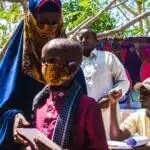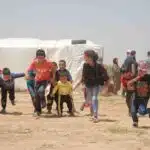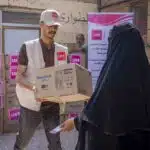Kenya is currently dealing with one of the gravest food crises in the recent past. Millions of people in the country are suffering from hunger and thirst as a result of the severe drought brought on by the failure of four consecutive rainy seasons.
However, the drought is not the only issue. A number of additional regional and global elements are at play. These are seriously endangering people’s lives all around the country. These include high inflation, climatically related calamities, conflicts, and displacement.
As people struggle to survive and gain access to scarce resources, we are witnessing an increase in child marriage rates, a rise in school dropout rates, and growing conflicts as a result of the hunger crisis.
UMR is implementing many projects to feed starving children in Kenya. Let’s take a look at the crisis, solutions and UMR’s contribution.
Reasons for Food Crisis
Food insecurity is a problem in Kenya’s urban and rural areas. Some of the core reasons are –
- Two years of failed rains,
- Climate change,
- A locust infestation,
- The war in Ukraine, and
- Inflation.
Kenyans find it challenging to eat three meals a day due to the high cost of staple foods. While this is happening, many people in the northern, semi-arid regions lack any access to food.
The Sufferings of Children in Kenya
Over 100,000 children under the age of 5 require treatment for severe malnutrition. Approximately 1.1 million children nationwide require food assistance.
Kilifi is one of the most affected areas of Kenya. Children are leaving school there to assist family members in their search for water. Those who continue their education find it difficult to focus on their academics.
Children are falling asleep during class time because of the lack of food. High school students are fed in school. But kindergarten and primary school students are not because their parents are supposed to feed them at home during lunch or pack them a lunch. Due to the present food crisis, this doesn’t happen very often.
Emergency Solutions
With the food crisis, lack of money, and little help from the government, it seems unlikely that poor communities in Kenya will be able to solve this problem on their own. This is where international non-profit organizations come in. Working with local partners, they want to change this situation. There are many steps they can take, such as-
Emergency Food Aid
They should provide emergency food aid to vulnerable children and families. This can include distributing ready-to-eat meals, nutritious food packages, and fortified supplements. Organizations like UMR often play a crucial role in coordinating and implementing such interventions.
Agricultural Support
Enhancing agricultural productivity and promoting sustainable farming practices can help address long-term food security challenges. This includes –
- Providing small-scale farmers with access to improved seeds, fertilizers, irrigation systems
- Training in modern farming techniques like hydroponics, aquaponics and vertical farming
- Supporting local farmers and empowering them to produce more food
Nutritional Programs
Malnutrition is a significant concern among children during a food crisis. They should implement targeted nutritional programs for infants and young children. It can help prevent severe malnutrition and its long-term consequences. These programs can include providing nutrition education and access to healthcare services.
Climate Change Adaptation
Given the impact of climate change on food production, implementing strategies to adapt to changing weather patterns is crucial. This may involve –
- Promoting climate-smart agricultural practices,
- Investing in irrigation systems, and
- Developing early warning systems to mitigate the effects of droughts and floods.
Help Us!
UMR is conducting many programs to feed starving children in Kenya. If you want to help, you can donate to us and help to feed these poor children. They desperately need your help.









